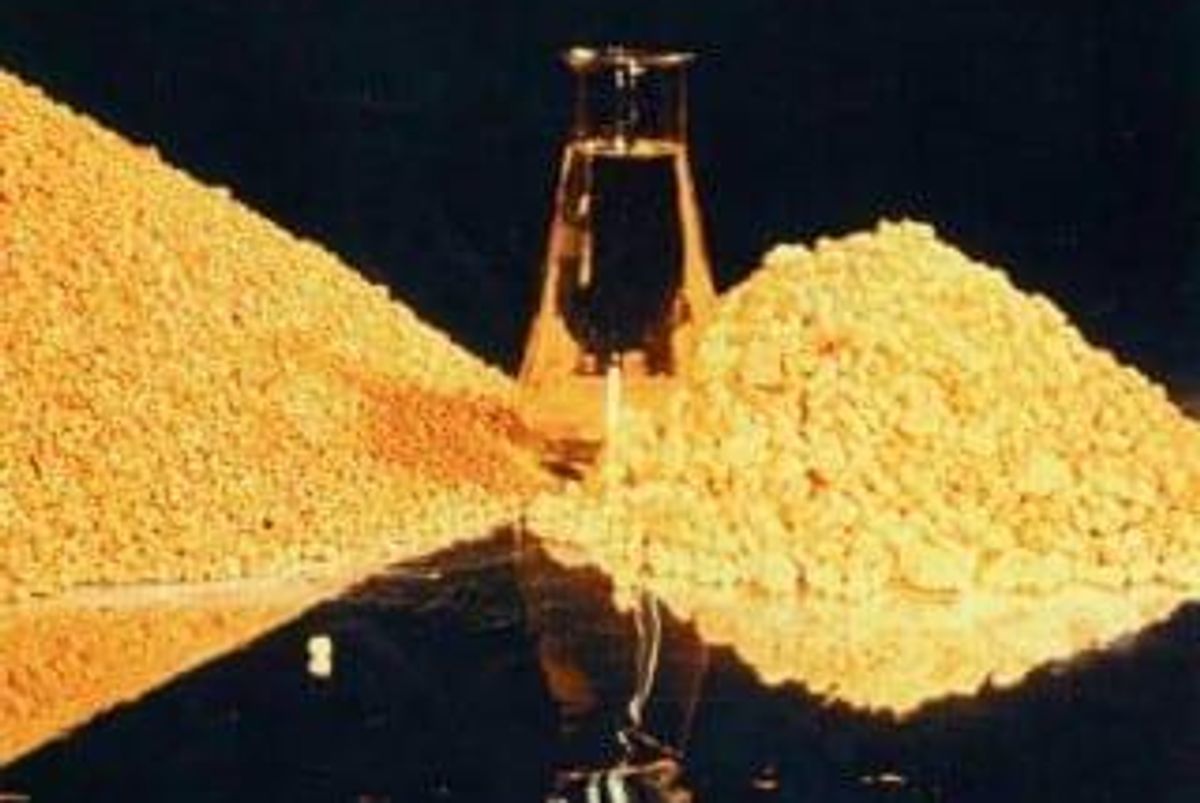
The study shows a post-tax NPV of $1.02 billion and a post-tax IRR of 34.2 percent. The payback period is set at 1.7 years.
Long-awaited news hit the uranium space Thursday morning when Fission Uranium (TSX:FCU) released the results of a preliminary economic assessment (PEA) for the Triple R deposit, located at its Athabasca Basin-based Patterson Lake South property.
The PEA points to a post-tax NPV of $1.02 billion and a post-tax IRR of 34.2 percent. It also outlines post-tax net cash flow of $2.53 billion, estimated capital costs of $1.1 billion and an estimated post-tax payback period of 1.7 years.
In terms of output, Triple R is expected to produce an estimated 100.8 million pounds of uranium at a metallurgical recovery of 95 percent; 77.5 million pounds of U3O8 should be recovered in the first six years of production. Average operating costs are set at US$14.02 per pound of U3O8 over a 14-year mine life.
The study considers PLS as a standalone mine and mill operation, and includes the development and extraction of both the R00E and R780E zones; however, it excludes the recently discovered R600W zone as it is still in early stages of drill definition. A combination of open-pit and underground mining is outlined, as well as a dyke system for water control.
“This PEA is an incredibly important milestone, and shows the viability of development and profitability of the unique, shallow, large and high-grade Triple R uranium deposit. The study confirms this unique deposit is a robust project with very strong economics,” Ross McElroy, Fission’s president, COO and chief geologist, said in a press release. “With anticipated operating costs of US$14.02/lb and a pre-tax IRR of 46.7%, we are looking at low cost production with a payback and highly profitable life of mine.”
Fission’s PEA numbers vs. the uranium price
As mentioned, the PEA points to operating costs of US$14.02 per pound over the life of mine, which would make Triple R potentially one of the lowest-cost uranium operations in the world. However, the study is based on a uranium price of US$65, which is quite a bit higher than the current spot price of around US$39.75.
Still, David Talbot of Dundee Capital Markets said that production at PLS is likely seven or eight years down the road. That leaves a lot of time for the uranium price to make a rebound. Many analysts are expecting that to happen by 2020, and while nobody can predict exactly how high the uranium price will get, Cantor Fitzgerald’s Rob Chang said in June that he expects an increase similar to the one seen in the mid-2000s.
“We are going to see it jump $5 to $10 every week, like we saw before, because it just has to happen that way. I’m not sure exactly when this will happen, but there frankly is just not enough supply. It’s a very thin market, and once you get two, three, four utilities trying to buy at the same time, you are going to see large jumps,” he said.
Overall, Cantor’s uranium spot price predictions for the next three years are quite optimistic. The firm said in July that it expects a price of US$50 in 2016, US$60 in 2017 and US$70 in 2018.
If Cantor Fitzgerald’s predictions for the coming years ring true, Fission should be in a great spot once it begins producing at PLS. What’s more, the company plans to continue definition drilling within the R600W zone, where high-grade mineralization was recently discovered, and its addition will likely bring further upside.
“It’s also important to note that the recently discovered, high-grade R600W zone, which was not included in the PEA, has the potential to add a great deal to the bottom line as the Triple R continues to grow,” McElroy said. “Additionally, a mill at PLS has the potential to become a key centerpiece for the Western Athabasca Basin — with the potential to process ore from other high-grade projects in the region as they are taken into production.”
By 1:00 p.m. EST Fission’s share price was at $0.76, down 2.56 percent. Year-to-date the company’s share is down 11.63 percent.
Securities Disclosure: I, Kristen Moran, hold no direct investment interest in any company mentioned in this article.
Related reading:
Denison Mines and Fission Uranium to Merge
Drill Tracker Weekly: Fission Discovers New Parallel Zone at Depth in 600W Zone
Ross McElroy on Fission’s Latest Assay Results and Upcoming Summer Drill Program
Cantor Fitzgerald’s Uranium Outlook and Stock Picks





